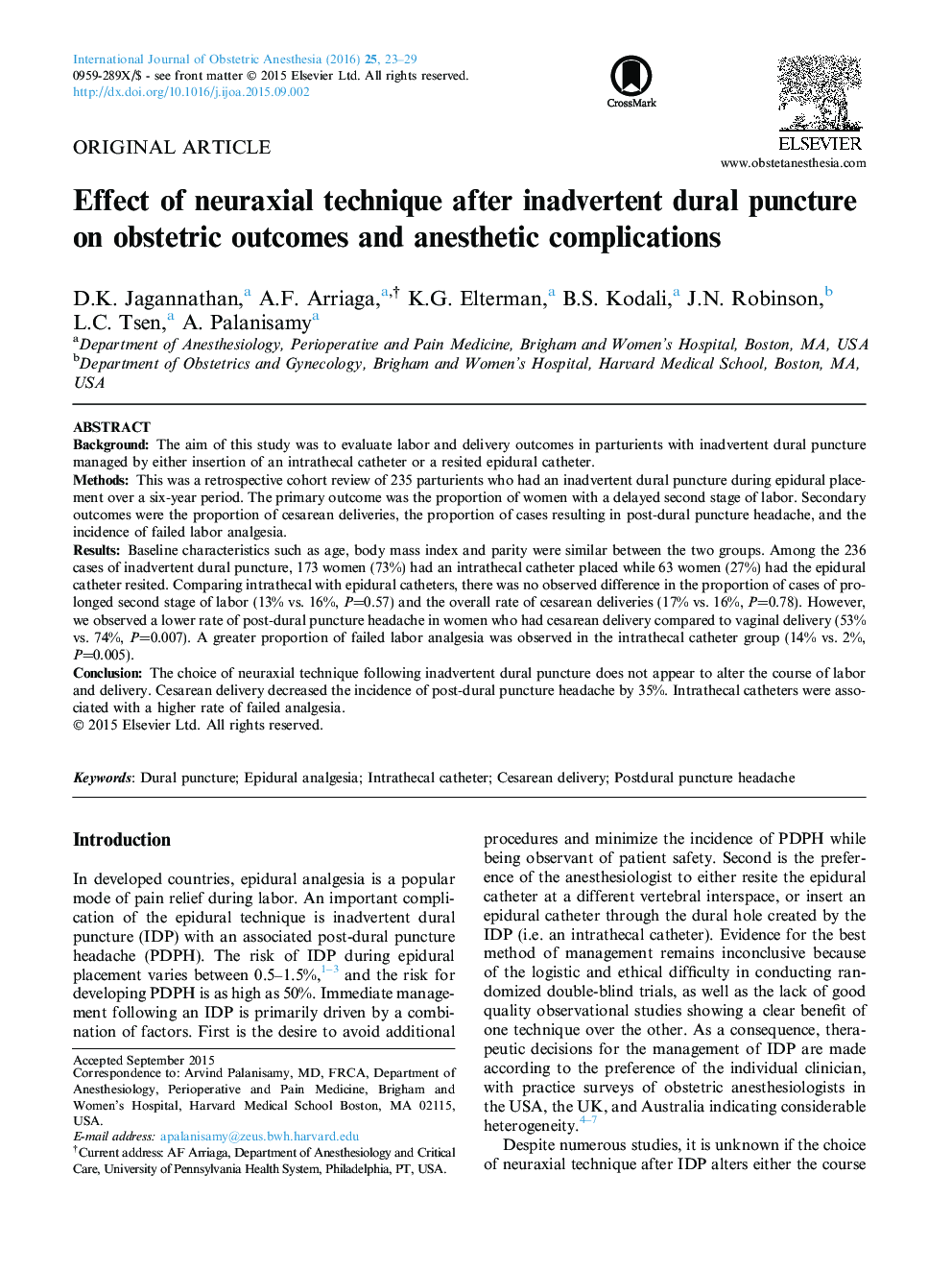| Article ID | Journal | Published Year | Pages | File Type |
|---|---|---|---|---|
| 2757456 | International Journal of Obstetric Anesthesia | 2016 | 7 Pages |
•Inadvertent dural puncture can be managed with an intrathecal catheter or epidural resite.•It is not known if this variation in practice influences obstetric outcomes.•We compared obstetric outcomes following these two management techniques.•There were no differences in obstetric outcomes between the two groups.•Intrathecal catheter was associated with a 14% failure rate.
BackgroundThe aim of this study was to evaluate labor and delivery outcomes in parturients with inadvertent dural puncture managed by either insertion of an intrathecal catheter or a resited epidural catheter.MethodsThis was a retrospective cohort review of 235 parturients who had an inadvertent dural puncture during epidural placement over a six-year period. The primary outcome was the proportion of women with a delayed second stage of labor. Secondary outcomes were the proportion of cesarean deliveries, the proportion of cases resulting in post-dural puncture headache, and the incidence of failed labor analgesia.ResultsBaseline characteristics such as age, body mass index and parity were similar between the two groups. Among the 236 cases of inadvertent dural puncture, 173 women (73%) had an intrathecal catheter placed while 63 women (27%) had the epidural catheter resited. Comparing intrathecal with epidural catheters, there was no observed difference in the proportion of cases of prolonged second stage of labor (13% vs. 16%, P=0.57) and the overall rate of cesarean deliveries (17% vs. 16%, P=0.78). However, we observed a lower rate of post-dural puncture headache in women who had cesarean delivery compared to vaginal delivery (53% vs. 74%, P=0.007). A greater proportion of failed labor analgesia was observed in the intrathecal catheter group (14% vs. 2%, P=0.005).ConclusionThe choice of neuraxial technique following inadvertent dural puncture does not appear to alter the course of labor and delivery. Cesarean delivery decreased the incidence of post-dural puncture headache by 35%. Intrathecal catheters were associated with a higher rate of failed analgesia.
